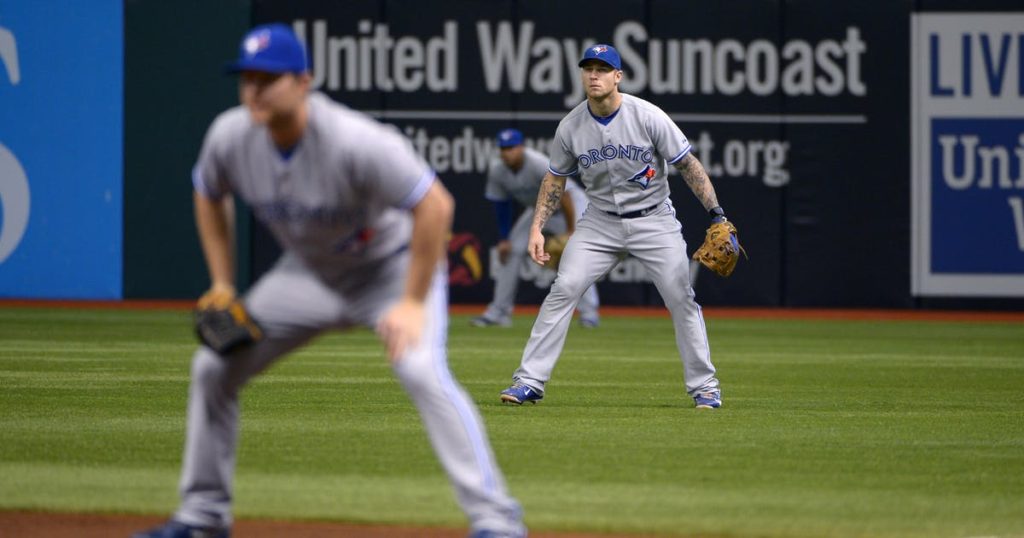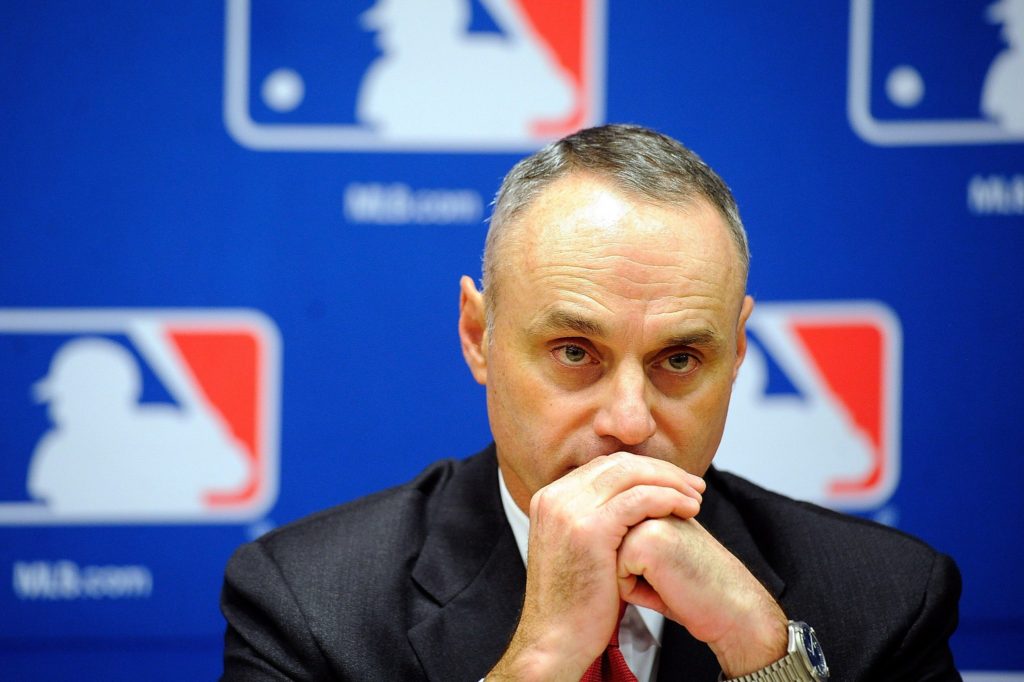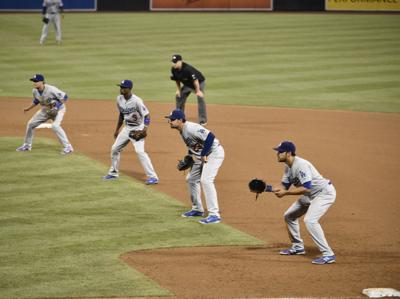The End of Defensive Shifts?

Credit: Sporting News

As the MLB Winter Meetings get underway, it appears Rob Manfred, the commissioner of Major League Baseball, has company in his long-held desire to limit the defensive shift. Rumor has it that MLB may start by limiting shifts, but ultimately even ban the strategy.
The competition committee, which includes general managers and field managers, former players, and the presidents of some teams, appears to be leaning in that direction too. However, the MLB Player’s Union would also have to approve any changes.
The shift, (most frequently the placement of three infielders on one side of second base) has been around since the 1920’s or even earlier. In 1946, Cleveland Indian’s player/manager Lou Boudreau targeted Ted Williams. Despite the shift, Williams stuck to his approach at the plate to the point that Ty Cobb accused him of being “stupid”.
Manfred, concerned about fan interest, wants to increase the action on the field, a commendable goal. This year’s batting average of .248 marked the lowest point since 1972’s .244. Even more troubling, for the first time in the history of the sport, there were more strikeouts than hits.
Fans can all agree that there is nothing more mind-numbing than watching a guy hack at three or four pitches and walk back to the dugout. But shifts have little or nothing to do with the increase in strikeouts. Instead, strikeouts have increased thanks to the emphasis on home runs, to say nothing of the current crop of pitchers with their 95 mph fastballs and gravity-defying breaking balls.
Super agent Scott Boras warns that defensive shifts have “broken” the game, but statistics don’t agree. Instead, the shift may have slightly “bent” the game. Against the shift, players batted .248 as opposed to .258, but slugging increased slightly, as did walks.
Most players, especially Kris Bryant, would probably agree with Houston Astros infielder Alex Bregman, who told Sports Illustrated “When I’m hitting, there should be no shifts, but when we’re on defense, we can shift whenever we want.” Bryant, the Chicago Cubs’ third baseman faced the shift in 54.8 percent of plate appearances. Why? Bryant pulled 84 percent of groundballs he hit.
As third base coach for the Arizona Diamondbacks, Andy Green enthusiastically endorsed defensive shifts. In 2014, the D-Backs employed the shift 587 times and ranked 10th in baseball. Those numbers paled, however, compared to the Tampa Bay Rays under Joe Maddon. The Rays led all of baseball with more than twice that number of defensive shifts.

With their current clubs though, Green and Maddon have depended far less on shifts. The Cubs shifted for 5.1 percent of plate appearances, 28th in baseball, the Padres 7.6 percent of plate appearances, 26th.
As a former player, Green recognizes the impact of asking players to change the way they have defended since they were kids. They need to have some level of comfort in defensive positioning, which can’t be achieved by an edict from above. Paradoxically, pitchers may also be affected, although extensive and relatively recent shift data shows inconsistencies in multiple measurements. For some reason, pitchers may tend to nibble a bit more and throw fewer fastballs when the infielders play out of position.
The data indicate that defensive shifts reduce the number of singles, but do nothing to inhibit doubles, triples, or home runs, the hits most likely to score runners. Furthermore, shifts have absolutely nothing to do with the pace of play, another of Manfred’s bugaboos.
“Rather than vilifying the shift, Manfred should be broadcasting the ambiguities of it,” writes Sam Miller of ESPN.com. “He should be emphasizing each team’s unique approach to it. The shift might or might not be working. But it isn’t boring.”
Baseball has always been about making adjustments. It’s not surprising that teams would position defenders with the purpose of creating the optimal result for their purposes. If Manfred and the powers that be really do want to increase fan interest in the sport, they must address far more compelling trends, including Major League teams deliberately tanking. San Diego fans know all about that dispiriting strategy.
Baseball has been a part of Diane’s life since her father played professionally (mostly at the minor league level). She has written for a number of publications and concentrated on companion animal welfare. She welcomes the opportunity to write about the sport she loves. Diane shares her home with her husband and a house full of rescued animals.
Hi guys,
Thanks for all your interesting comments. Obviously, none of you think shifts are a grave danger to the baseball. I often wonder if Rob Manfred even likes the game…
We all appreciate your reading EVT.
Diane
Baseball is a dying game, thanks in large part to fools like Manfred.
To fix baseball and move it into this century, in no particular order:
1) Speed things up. 3 hours is just too long. Institute a pitch clock, more than 10 seconds between pitches is simply unbearable. Stop allowing TV to slow the game down with their commercials. 2 minutes between innings is more than enough. Ban all the stepping out between pitches. Stay in the damn box and hit.
2) Restore the integrity of the game. Ban all the PED cheaters forever. That McGwire wore the Padres uniform is beyond all sense. Young folks see the corruption and hypocrisy here, even if MLB doesn’t. Stop all this unwritten law b.s. If a pitcher throws at a hitter, toss him. And suspend him for a month. Next time the rest of the year. Time after that permanently. Take this violent crap out of our game.
3) Fix the money mess. End all revenue sharing. There is no reason for well run teams to subsidize the idiot teams. I frankly could not care less if Cincinnati or Cleveland loses a team. Dying cities no one wants to live in. End the salary cap. It’s just a way for owners to artificially hold down players salaries. Pay the players what they are worth. Institute a salary minimum. A team should have to spend at least $100 mm on salaries. If they can’t generate that much revenue with all the TV money washing over the game they need to be contracted or relocated. End all public financing of stadiums. The people who own baseball teams are billionaires, why should taxpayers finance a billionaire’s investment. Look at San Diego, a terrible homeless problem, and some of the worst roads in the country, and then look at the cost to the taxpayers to build Petco. It is downright immoral to spend public money to entertain some of us, while some others of us sleep on the streets.
Wow Tanned T – I thought my ideas were radical !
I have to agree, Manfred is only going to make things worse. He won’t make the game quicker if it costs MLB $1. The best game I went to this year was vs. Dodgers, Lauer over Hill, 4-1 in 2:18. The Padres actually had a lot of games under 3 hrs. this year, especially when they lost.
Sorry to hear you have to sleep on the streets
Sometimes I sleep in my car, depends on the weather. 🙂
Nice piece Diane. I don’t see an end in sight. I as a fan like seeing the shift and enjoy it even more when it gets beat. What happened to hitting it where they are not? Are players no longer taught basic fundamentals of batting? Some of these millionaires can’t even bunt, let alone go the other way to move a runner. I get tired of K or HR. In today’s game with advanced analytics and launch angles, America’s pastime is losing. Have the competition committee rewind the clock a few decades.
Coaches have been charting batted balls for years. The shift is a result. It didn’t take advanced metrics to figure it out. When are left handed batters going to make the adjustment? No team would have shifted against Tony Gwynn or Pete Rose. Choke up, change your stance, or shorten your swing. Once the other team knows you can adjust, the shift will go away.
Maybe Manfred should look into the strikeout problem – 4 strikes for a strikeout, 5 balls for a walk? That’ll make the game more exciting ! (not)
Sawadee Khop from Phuket…
Love the shift! Love smallball! dislike the emphasis of the homerun. Disgusted with the number of strikeouts. The first time I saw a very well orchestrated shift was when Dave Cash came to the Padres and the Expos came to town and shifted so dramatically that it pretty much ended his career. Shifting does not prevent balls in play. Fans want to see action. Players need to reduce the strikeouts in favor of balls in play. Get ’em on, move ’em over, get ’em in.